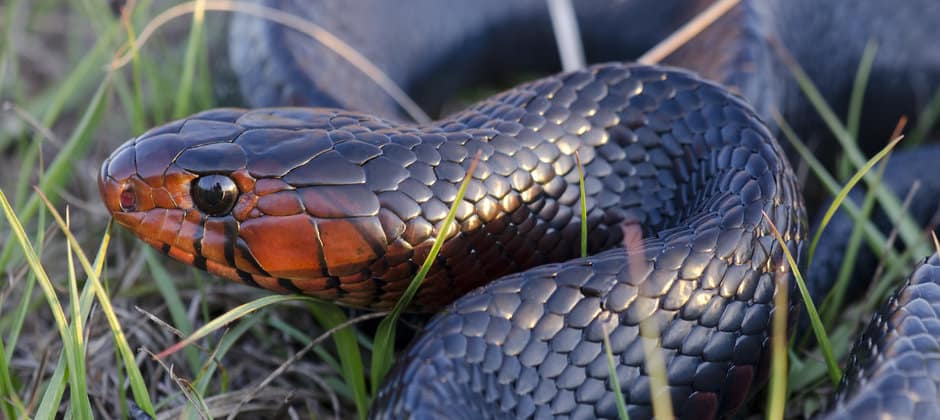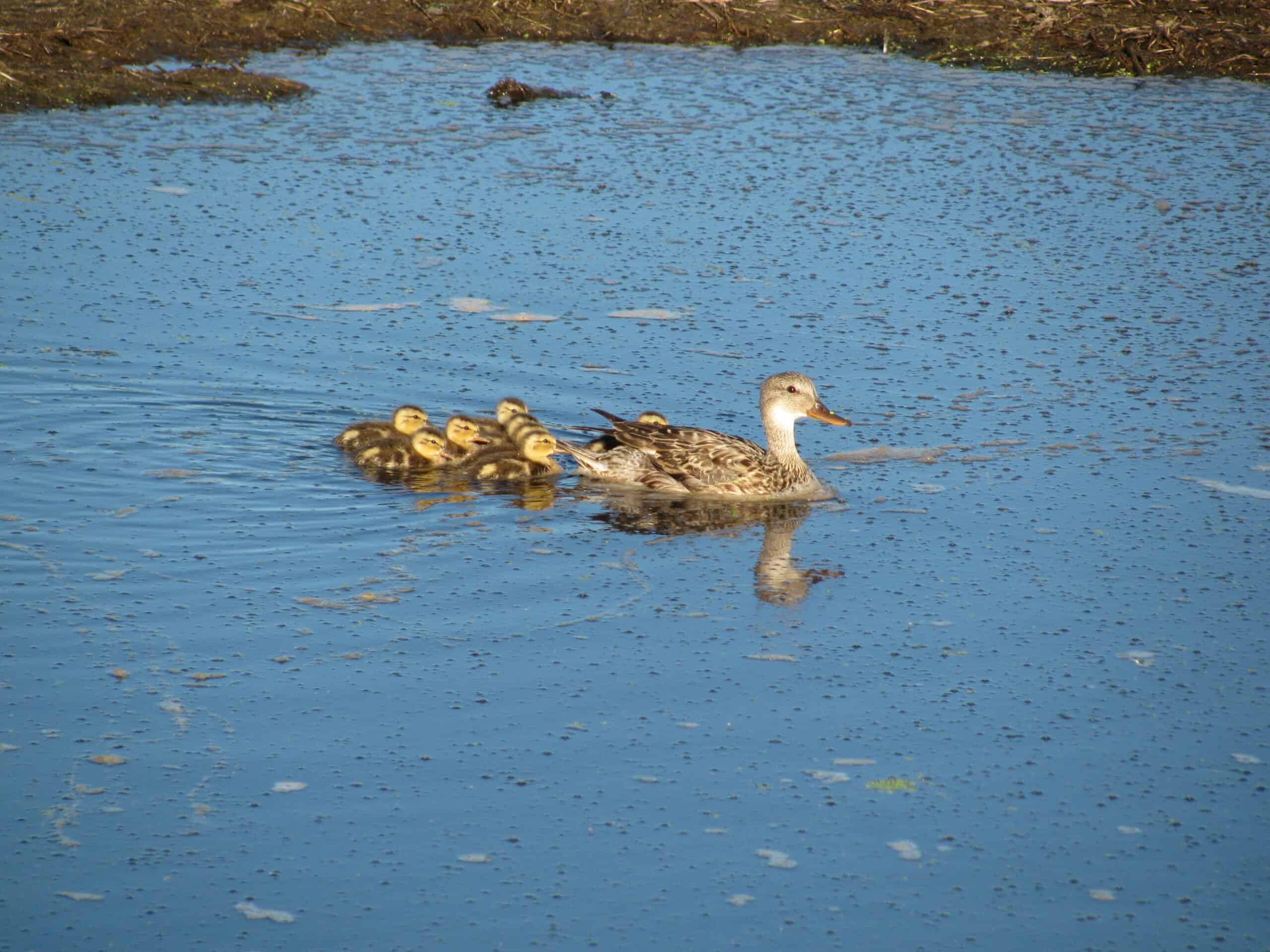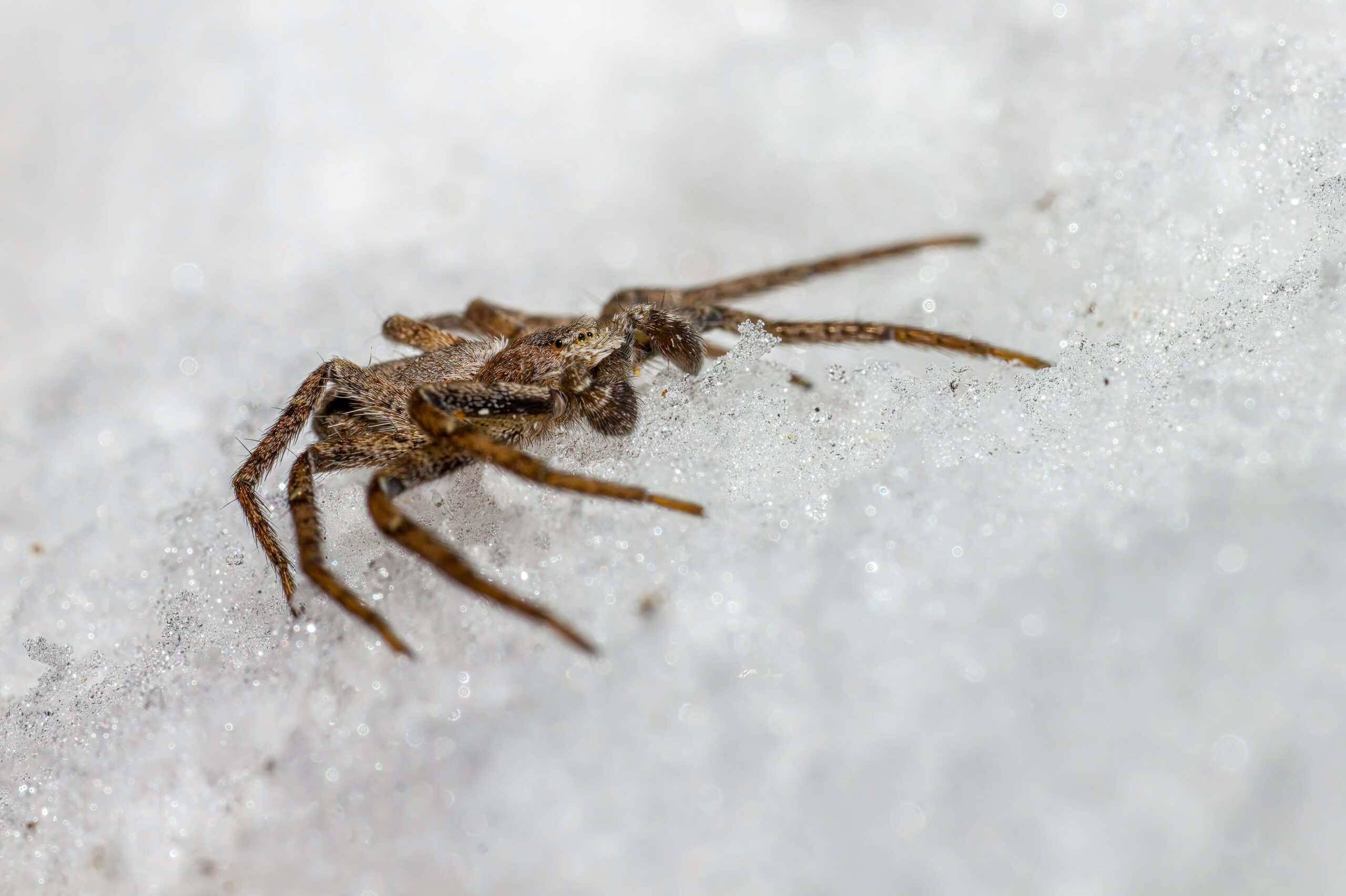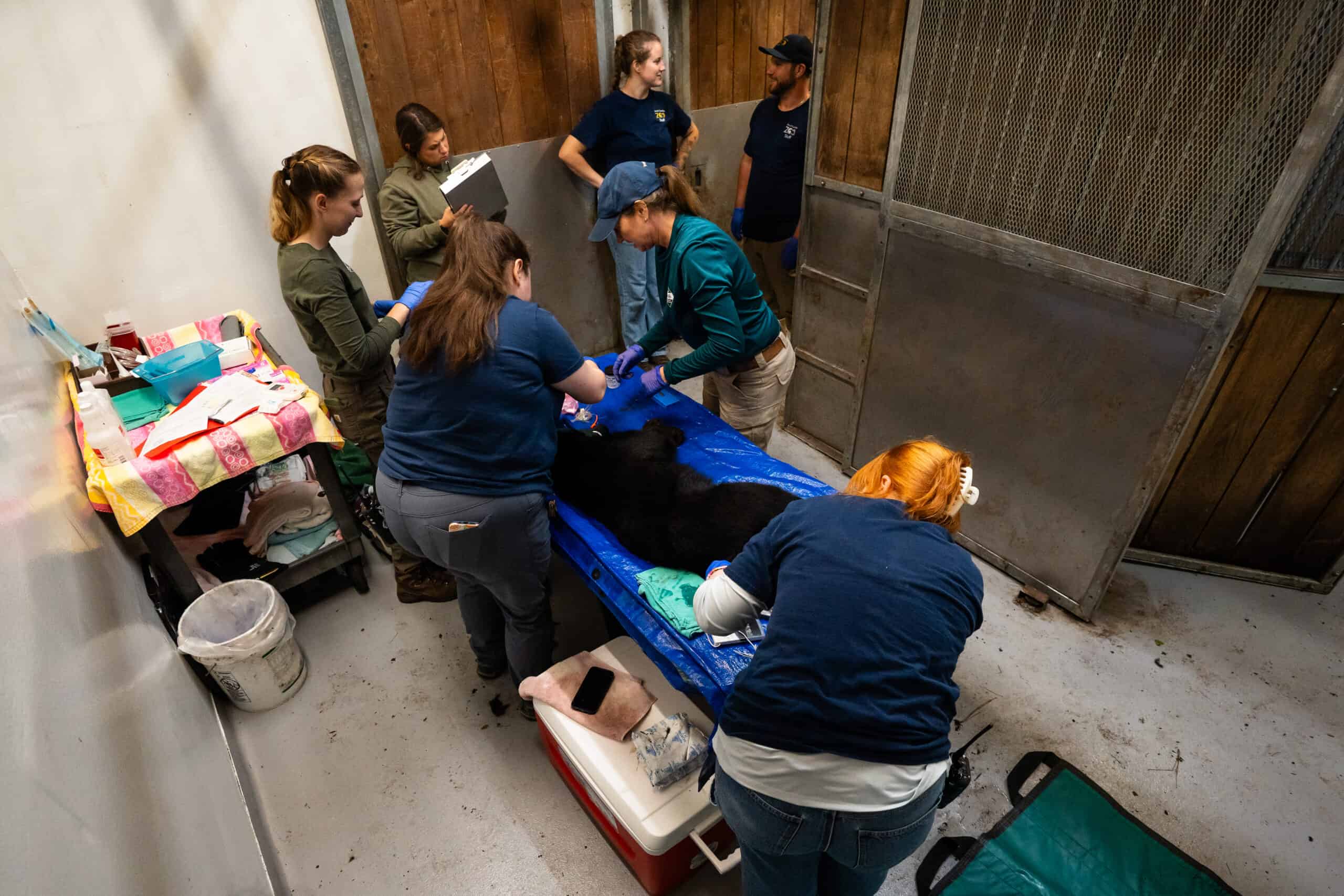Share this article
More indigo snakes need to be released for reintroduction success
At the right angle, the second longest native snake in the United States and Canada is a shimmery black. But just blink and catch the orange-throated serpent in a different light and the sheen of its back might glisten in a deep, dark blue occasionally speckled with white or beige checkers.
“They’ve very majestic. They’re large, they’re interesting — they’re beautiful,” said Michele Elmore, the species’ lead biologist for the U.S. Fish and Wildlife Service.
But the striking appearance of the eastern indigo snake (Drymarchon couperi) is also partly the reason for its decline. The reptiles have been listed as threatened under the Endangered Species Act since 1978 due to being captured for the pet trade. While this problem has lessened in recent years, habitat loss and death from car strikes continue to create obstacles to their recovery.
The snakes were extirpated from much of their western range — the Florida Panhandle, Alabama and Mississippi — by the start of the new millennium.
Under the guidance of the Eastern Indigo Snake Reintroduction Committee, a group of stakeholders — including state wildlife managers from Florida, Georgia and Alabama — as well as federal wildlife managers and representatives from the Orianne Center for Indigo Conservation, a partner of the Central Florida Zoological Society and the Orianne Society that founded it, partners have been working to restore snake habitats and plan reintroductions since the early 2000s.
One of the problems the team addressed was the concurrent loss of gopher tortoises (Gopherus polyphemus). Indigo snakes use tortoise burrows, especially during winter in parts of their range that drop below freezing. But the burrows had been gassed for decades in an effort to flush out eastern diamondback rattlesnakes (Crotalus adamanteus) from the holes as part of rattlesnake roundups, annual events involving the capturing of snakes for sale, food, display or to be used in animal products. People were also harvesting the tortoises themselves for food, Elmore said.
Tortoise numbers also declined due to habitat degradation from fire suppression strategies in the area, said TWS member Brian Folt, a postdoctoral researcher at Auburn University.
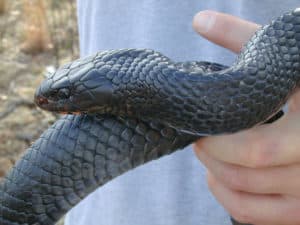
Indigo snakes are considered threatened under the Endangered Species Act.
Credit: Pete Pattavina/USFWS
Many of these problems have stopped in recent years. Gopher tortoises are listed federally as threatened in the western portion of their range, and considered state-threatened in Florida, so tampering with eggs and burrows or killing tortoises is now illegal.
A large number of reintroduction projects fail, according to recent analysis, often because managers reintroduce animals back into degraded habitats that they haven’t fixed. But thanks to efforts to conserve gopher tortoises and active habitat management and restoration, some areas were deemed suitable for indigo snake reintroduction.
In 2010, the first reintroduction program began in Alabama’s Conecuh National Forest. The released animals were reared from wild-caught parents that came from stable Georgia populations. Within the last few years, additional wild snakes from Florida have entered the captive collection, now housed at the Orianne Center for Indigo Conservation, of Central Florida Zoo. Wildlife managers and biologists have collected snakes in the wild in Georgia and Florida — many of them seized by law enforcement, said Brooke Talley, who was previously the Reptile and Amphibian Conservation Coordinator.
Since then, reintroduction has expanded to include the Apalachicola Bluffs and Ravines Preserve in Florida, a property of The Nature Conservancy.
But a new study shows that the chances of success of these reintroduction programs could be greatly improved by altering the release plans.
“In my opinion, we may not be releasing enough snakes,” said Folt, the lead author of the study published recently in Animal Conservation. “It’s decreasing our likelihood of the project being successful.”
Folt and his co-authors evaluated the reintroduction project’s strategies in an effort to determine the likelihood of success. They found that the best success occurred by releasing older snakes that have higher survival and that are closer to reproduction ages, compared to younger snakes.
One of the challenges of reintroduction is how to best monitor the success of the program — especially in a snake that’s so difficult to find due to its cryptic nature.
“You might only see one or two snakes a year and still have a growing population,” Folt said.
Some studies use radio-tags to track animals, but in this case the researchers stopped using transmitters for fears the surgically implanted tags had negative effects on survival. They are now exploring using alternative monitoring techniques, like trail cameras, box traps and boots-on-the-ground searches to monitor trends in abundance in the populations.
Folt’s team determined the number of snakes that needed to be released to create a self-sustaining population. They found that about 300 snakes needed to be reintroduced at a given site over five years in order to have less than a 10% chance of the reintroduced population being extirpated — an average of 60 snakes per year.
But this year, only approximately 20 snakes were released at each site — about a third of what Folt’s team believes is necessary to achieve a high probability of success — while previous years have seen similar or lower numbers of releases at each site.
The problem is that the captive breeding colony is having trouble producing enough babies to meet the needs of two reintroduction sites. Given that the snakes are federally threatened, wildlife managers are uneasy about capturing more for captive breeding.
“We do need more indigos,” Talley said. “We need more adults.”
She added that the Florida wildlife agency, Folt and others are also conducting a genetic analysis of all known captive snakes in the U.S., mostly at zoos, to see how they compare to the genes of wild snakes.
“If any of those indigos would qualify, based on their genes,” Talley said “we would love to include them in the repatriation program.”
Moving forward with reintroduction
Folt believes that one potential solution for improving the success of reintroduction is to complete all of the yearly releases at one site until targets are reached to create a self-sustaining population. Then, with success at one site in hand, shift the focus to other sites.
“My feeling is that we may be spreading our resources too thin,” Folt said.
The model they ran shows that the older reintroduced population in Alabama currently has a 23% chance of being nearly extirpated, while the Florida population has a 61% chance of extirpation due to lower numbers. However, the Florida release program has only recently started.
Another strategy could be to stop all reintroductions for a couple of years, Folt speculated, to bolster the number of captive individuals until wildlife managers are able to release 120 individuals each year, split between both sites.
“We have spent a substantial amount of money on this project — so we should carefully evaluate how best to improve our process,” Folt said.
Talley, currently the alligator management coordinator for the Florida FWC, said the state is unlikely to stop releases. “There is a lot of momentum built behind these programs, and we’re already seeing success,” she said.
She points to recent milestones at both sites. A wild hatchling snake from repatriated parents was recently confirmed at the Alabama site. Meanwhile, managers at the Florida site are seeing an increase in survival among released indigos every year. They see males and females occupying the same burrow, snakes are setting up territories, and the snakes they find seem healthy. With these recent successes of the program, the Eastern Indigo Snake Reintroduction Committee isn’t likely to pause their work, Talley said, but they are working with Folt and his colleagues to see how best they can enhance the program moving forward.
“On that committee, we try to use the best of the information available to us, including Folt’s assessments,” she said. “We’re doing the best we can.”
Header Image:
Indigo snakes have been captured for use in the pet trade partly due to their striking appearance.
Credit: U.S. Forest Service – Southern Region



